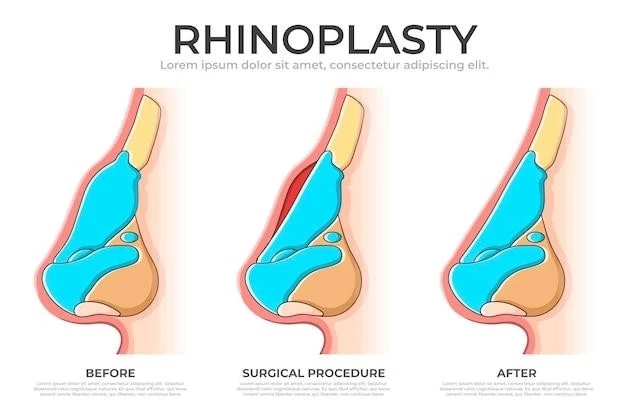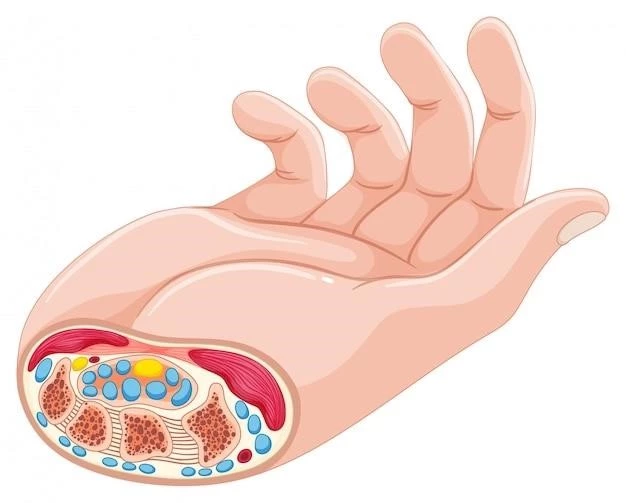Introduction to Hypoplastic Thumbs and Hydranencephaly
This section provides an overview of the rare diseases, focusing on hypoplastic thumbs and hydranencephaly. These conditions present unique challenges due to their distinct medical characteristics and impact on individuals’ lives.
Definition of Hypoplastic Thumbs and Hydranencephaly
Hypoplastic thumbs refer to a congenital anomaly where the thumb is underdeveloped or incomplete. Hydranencephaly is a rare neurological disorder characterized by the absence of the cerebral hemispheres, replaced by cerebral spinal fluid. Individuals with hypoplastic thumbs may have partial or absent thumbs, affecting hand function. Hydranencephaly leads to severe neurological deficits and developmental delays due to the brain’s abnormal development. These conditions require specialized medical attention to address associated complications.
Distinction between Hypoplastic Thumbs and Hydranencephaly
It is essential to understand the clear differences between hypoplastic thumbs and hydranencephaly. Hypoplastic thumbs primarily involve the physical manifestation of underdeveloped or absent thumbs. In contrast, hydranencephaly is a severe neurological condition where the cerebral hemispheres are absent, impacting cognitive and motor functions. While hypoplastic thumbs affect hand dexterity, hydranencephaly results in profound neurological deficits and developmental delays. These distinct conditions necessitate specialized care and interventions tailored to each disorder’s unique challenges.
Understanding Congenital Anomalies
This section delves into the complexities of congenital anomalies, shedding light on the unique challenges presented by hypoplastic thumbs and hydranencephaly. Exploring the underlying causes and impact on individuals’ lives is crucial for comprehensive management.
Explanation of Congenital Anomalies
Congenital anomalies are structural or functional abnormalities present at birth, impacting various body parts or systems. In the case of hypoplastic thumbs, the anomaly affects the development of the thumb, leading to partial or complete absence. Hydranencephaly, on the other hand, is a rare condition where the brain’s cerebral hemispheres are absent. Understanding these anomalies is crucial for appropriate diagnosis, treatment, and support for individuals affected by these complex conditions.
Causes of Hypoplastic Thumbs and Hydranencephaly
Hypoplastic thumbs and hydranencephaly have distinct etiologies contributing to their development. Hypoplastic thumbs can arise from genetic mutations affecting limb formation during embryonic development. In contrast, hydranencephaly is often linked to vascular disruptions during gestation, leading to significant brain abnormalities. Understanding the genetic and environmental factors influencing these conditions is critical for accurate diagnosis and tailored interventions to address the unique challenges associated with each disorder.
Genetic Mutation and Developmental Delays
This section explores the role of genetic mutation in hypoplastic thumbs and hydranencephaly, alongside the impact of developmental delays on individuals affected by these complex congenital anomalies. Understanding these factors is crucial for comprehensive management and tailored interventions.
Role of Genetic Mutation in these Disorders
Genetic mutations play a significant role in the pathogenesis of hypoplastic thumbs and hydranencephaly. Specific gene alterations during fetal development can disrupt thumb formation, leading to hypoplasia. In hydranencephaly, genetic mutations affecting brain development can result in the absence of cerebral hemispheres. Understanding the precise genetic mechanisms underlying these disorders is vital for genetic counseling, early detection, and personalized treatment strategies tailored to each patient’s unique genetic profile.
Impact of Developmental Delays on Patients
Developmental delays have profound consequences for individuals with hypoplastic thumbs and hydranencephaly. These delays can affect motor skills, cognitive abilities, communication, and overall quality of life. In hypoplastic thumbs, developmental delays may impact hand function and fine motor skills, while in hydranencephaly, delays can lead to severe neurological deficits. Early intervention strategies, including therapy and support services, are crucial for addressing and minimizing the long-term effects of developmental delays on individuals affected by these conditions.
Neurological Deficits and Physical Therapy
This section delves into the neurological deficits associated with hypoplastic thumbs and hydranencephaly, emphasizing the importance of physical therapy in managing symptoms and enhancing quality of life for individuals affected by these conditions.
Neurological Deficits Associated with Hypoplastic Thumbs and Hydranencephaly
Hypoplastic thumbs and hydranencephaly are linked to significant neurological deficits. Individuals with hypoplastic thumbs may experience challenges in hand coordination and motor skills due to thumb abnormalities. In contrast, hydranencephaly can lead to profound cognitive impairments, seizures, and motor disabilities related to the absence of cerebral hemispheres. Understanding and addressing these neurological deficits are essential for comprehensive care and improving functional outcomes in affected individuals.
Importance of Physical Therapy in Managing Symptoms
Physical therapy plays a crucial role in managing symptoms associated with hypoplastic thumbs and hydranencephaly. For individuals with hypoplastic thumbs, targeted therapy can improve hand function, strength, and coordination. In hydranencephaly, physical therapy can help enhance mobility, address musculoskeletal issues, and support overall development. Collaborating with skilled physical therapists is essential to create personalized rehabilitation plans that optimize functional abilities and quality of life for individuals coping with these congenital anomalies.

Surgical Interventions and Prognosis
This section explores surgical options available for hypoplastic thumbs and hydranencephaly, alongside the prognosis for individuals living with these conditions. Understanding the potential interventions and expected outcomes is essential for informed decision-making and comprehensive care.
Surgical Options for Hypoplastic Thumbs and Hydranencephaly
Surgical interventions play a critical role in addressing hypoplastic thumbs and hydranencephaly. For hypoplastic thumbs, reconstructive surgeries can improve thumb function and aesthetics. In hydranencephaly, surgical procedures are limited due to the extensive brain abnormalities present. However, shunt placement or other neurosurgical interventions may be considered to manage associated complications such as hydrocephalus. Collaborating with a multidisciplinary team is essential to determine the most appropriate surgical approach tailored to the individual’s needs and optimize outcomes.
Prognosis for Individuals with these Conditions
The prognosis for individuals with hypoplastic thumbs and hydranencephaly varies based on the severity of their case and the presence of associated complications. For hypoplastic thumbs, outcomes following surgical interventions and physical therapy are generally positive, improving hand function and quality of life. In contrast, the prognosis for individuals with hydranencephaly is often guarded due to the extensive neurological deficits and developmental challenges they face. Multidisciplinary care, early interventions, and ongoing support are crucial in optimizing outcomes and enhancing the overall well-being of individuals living with these complex conditions.
Complications and Specialists
This section addresses potential complications arising from hypoplastic thumbs and hydranencephaly, highlighting the crucial role of specialized medical professionals in the diagnosis, treatment, and management of these complex congenital anomalies.
Potential Complications Arising from Hypoplastic Thumbs and Hydranencephaly
Hypoplastic thumbs and hydranencephaly can lead to various complications that impact quality of life. Complications of hypoplastic thumbs may include challenges in fine motor skills and hand function. Hydranencephaly can result in severe neurological deficits, intellectual disability, seizures, and vision impairments. These conditions necessitate regular monitoring and interventions to address potential complications promptly and enhance overall outcomes. Collaborating with a multidisciplinary team of specialists is crucial in managing these complexities effectively.
Role of Specialists in Treating and Managing the Disorders
The management of hypoplastic thumbs and hydranencephaly requires the expertise of a diverse team of medical specialists. Hand surgeons play a crucial role in addressing the specific challenges associated with hypoplastic thumbs, providing surgical interventions to optimize hand function. Neurologists, neurosurgeons, and developmental pediatricians are essential in managing the complex neurological deficits and developmental delays seen in hydranencephaly. Occupational therapists, physical therapists, genetic counselors, and social workers also form part of the multidisciplinary team, offering comprehensive care and support tailored to the unique needs of individuals living with these conditions. Collaboration among specialists is key to ensuring a holistic approach to treatment and maximizing outcomes for patients.
Treatment Options and Research Studies
This section delves into available treatment modalities for hypoplastic thumbs and hydranencephaly, alongside an overview of recent research studies aimed at advancing our understanding and management of these complex congenital anomalies.
Available Treatment Modalities for Hypoplastic Thumbs and Hydranencephaly
Treatment for hypoplastic thumbs may include surgical reconstruction, physical therapy for hand function, and occupational therapy for daily activities. Hydranencephaly management focuses on symptom relief, supportive care, and interventions for developmental delays. Multidisciplinary approaches involving surgeons, therapists, and specialists are essential. Research on innovative therapies and genetic studies continues to enhance treatment options for individuals with these conditions, aiming to improve their quality of life and functional outcomes.
Overview of Recent Research Studies in the Field
Recent research in hypoplastic thumbs focuses on innovative surgical techniques, prosthetic advancements, and outcomes following reconstructive procedures. In hydranencephaly, studies explore brain development mechanisms, neuroprotective strategies, and interventions to improve neurological function. Advances in genetic testing and prenatal screening are also areas of active investigation. Research efforts aim to enhance diagnostic accuracy, therapeutic approaches, and overall care for individuals with these challenging conditions, offering hope for improved treatment outcomes and quality of life.
